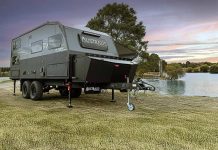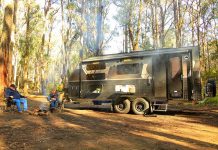Fuel. Like it or not (and we mostly don’t like it), you’ll spend a fair bit of time and moolah at the bowser when travelling the country. Hitch up a large caravan and, well, expect your fuel usage to almost double. To burn through 16L/100km of petrol or diesel wouldn’t be unusual, depending on the caravan and tow vehicle combo, of course.
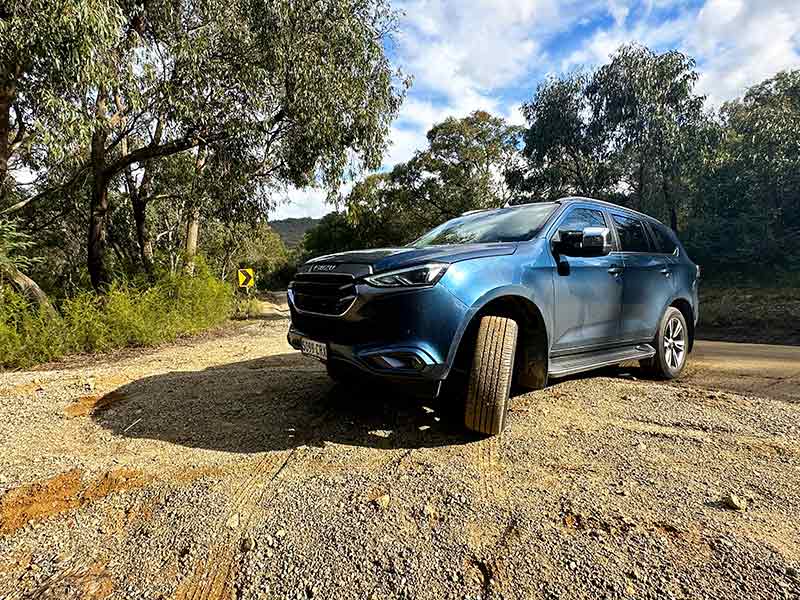 But it’s also worth knowing how much fuel your vehicle uses when unhitched. Whenever I’m at the wheel of an unfamiliar vehicle for a length of time, as I frequently am, it’s one of the first things I do. So, when Isuzu Ute Australia handed us the keys to a 2023 MU-X LS-T for six months, I headed straight to a servo to fill up and hit the road.
But it’s also worth knowing how much fuel your vehicle uses when unhitched. Whenever I’m at the wheel of an unfamiliar vehicle for a length of time, as I frequently am, it’s one of the first things I do. So, when Isuzu Ute Australia handed us the keys to a 2023 MU-X LS-T for six months, I headed straight to a servo to fill up and hit the road.
MU-X FUEL TEST
After topping up the tank – trickle-filling it until diesel was almost spilling out – I hit the highway towards Traralgon, a large, regional town a few hours’ drive east of Melbourne. Isuzu claims fuel efficiency of 8.3L/100km for this vehicle on a combined fuel cycle (city and highway driving).
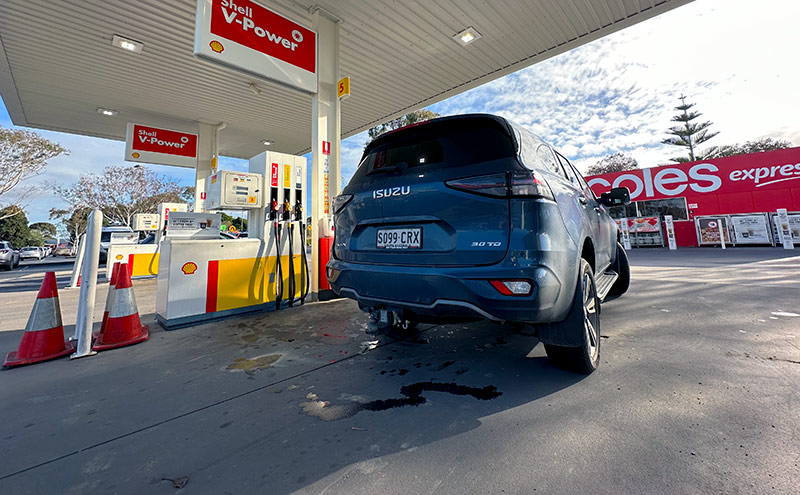 One important factor to note with fuel tests such as these: in real-world conditions, no two tests would yield identical outcomes. Anything from the road and weather conditions, to the attitude of the driver and the general flow of traffic, will impact the amount of fuel burned.
One important factor to note with fuel tests such as these: in real-world conditions, no two tests would yield identical outcomes. Anything from the road and weather conditions, to the attitude of the driver and the general flow of traffic, will impact the amount of fuel burned.
However, I figured that if I could get within cooee of 8.3L/100km, that would be a good result. From where I live, it’s roughly a 2.5-hour round trip to Traralgon, highway almost the entire way. Once in Traralgon, I drove in stop-start traffic for a good while and headed towards home, running some errands along the way, driving in traffic through the suburbs, etc.
The weather was not favourable – I drove into a strong wind all the way to Traralgon – and as I pulled alongside a bowser for the second time that day, I expected the wind to have increased the MU-X’s fuel consumption.
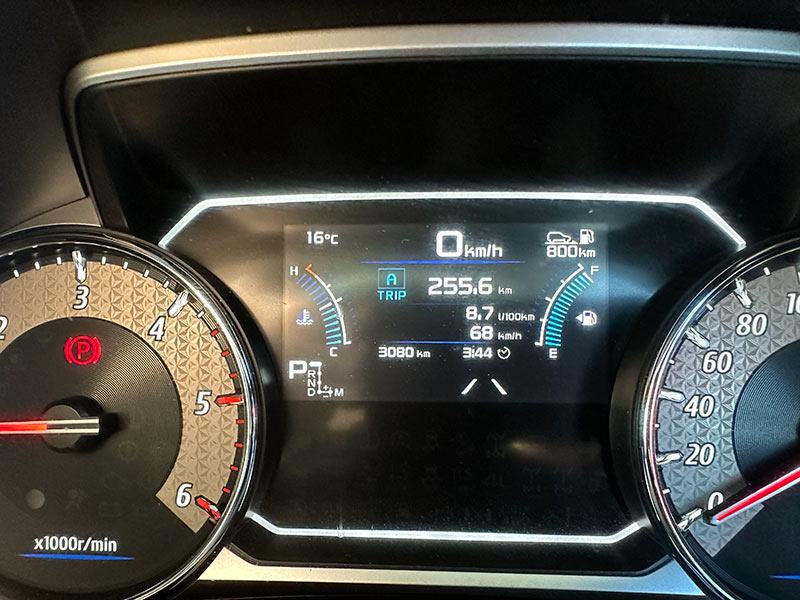 According to the trip-meter, I had driven 255.6km. A quick calculation revealed that the vehicle had consumed an average of 8.65L/100km – a little over 300ml per 100km more than Isuzu Ute Australia’s figure of 8.3L/100km. It’s not a huge difference by any means and I feel reasonably comfortable attributing the extra fuel consumption to the headwinds I experienced when travelling to Traralgon.
According to the trip-meter, I had driven 255.6km. A quick calculation revealed that the vehicle had consumed an average of 8.65L/100km – a little over 300ml per 100km more than Isuzu Ute Australia’s figure of 8.3L/100km. It’s not a huge difference by any means and I feel reasonably comfortable attributing the extra fuel consumption to the headwinds I experienced when travelling to Traralgon.
As the MU-X was pretty much brand new, with 3000km on the odometer, I am expecting fuel economy to improve as I put more kays on the clock.
I would also note that about nine months ago, I recorded fuel consumption of 7.54L/100km on the D-MAX LS-U+ – a vehicle that uses the same engine as the 2023 MU-X. I can only put this difference down to aerodynamics, the fact this MU-X is about 70kg heavier, and different road and weather conditions.
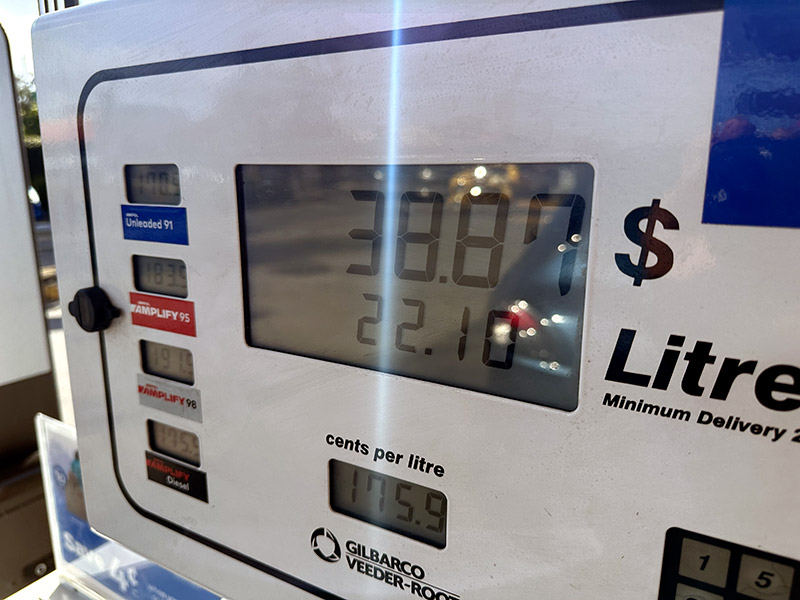
Ultimately, I set out to see if real-world driving conditions would put this vehicle’s fuel consumption within striking distance of Isuzu’s figure for this vehicle, knowing that the fuel testing by Isuzu would be done in as ideal conditions as possible. Overall, I’m happy with the result. I think potential and current owners of this vehicle could expect to use anywhere between 8 and 9L/100km of diesel, depending on all the usual caveats, from tyre pressure to weight in the vehicle, weather and driver attitude.
HOW TO TEST FUEL EFFICIENCY
It’s relatively easy to test how much fuel your vehicle is using. Whether hitched to a caravan or driving solo, the process is the same. First, fill your vehicle’s tank to the brim. You’ll probably need to trickle-fill past the first or second click of the pump trigger.
Then, zero your trip-meter. By doing this, you’re recording the number of kilometres travelled between fuel fill-ups. Some would say that relying on a vehicle’s trip-meter is not the most accurate approach, but with modern cars, I think this method is fine. An alternative might be to use a GPS.
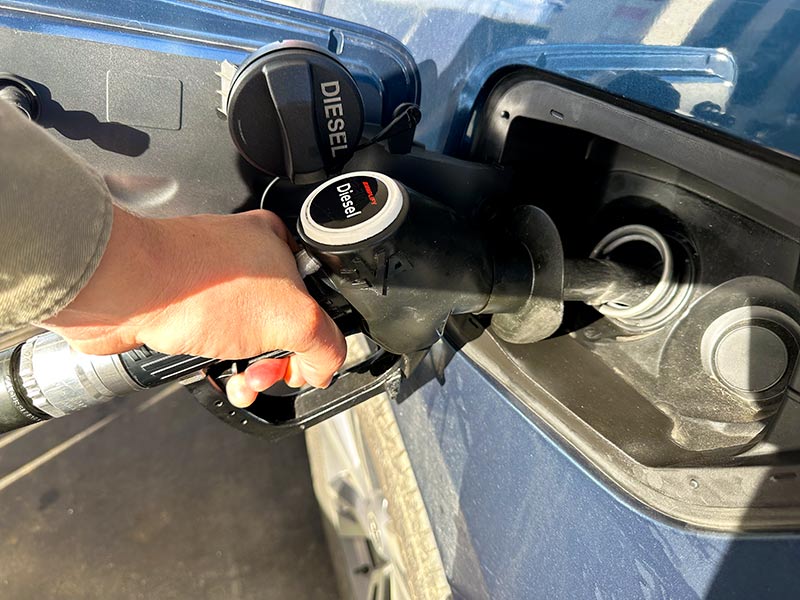 Once you’ve driven your vehicle a reasonable distance in a way that you feel is representative of your usual driving habits and practices, it’s time to fill up again. Fill as close to the brim as possible; by doing this, you’re effectively resetting the fuel level back to what it was before you began the test. Note the number of litres you put back into the tank.
Once you’ve driven your vehicle a reasonable distance in a way that you feel is representative of your usual driving habits and practices, it’s time to fill up again. Fill as close to the brim as possible; by doing this, you’re effectively resetting the fuel level back to what it was before you began the test. Note the number of litres you put back into the tank.
Now, what constitutes a ‘reasonable’ driving distance is up to you, but I’ve always used 200km as a minimum to achieve what I feel are fair results.
Once you’ve noted both the kilometres travelled and the litres used, a quick calculation will reveal your litres per 100km. Simply multiply litres used by 100, and then divide by the kilometres travelled. For example, let’s say a vehicle used 23L over a distance of 265km. You would multiply 23 (litres used) by 100, and divide the answer (2300) by 265 (kilometres travelled). The answer: 8.68L/100km.
As mentioned, this approach and formula also works for testing fuel consumption when towing, and we will perform a towing test on this MU-X in the near future and present the results in a future issue. Stay tuned!


